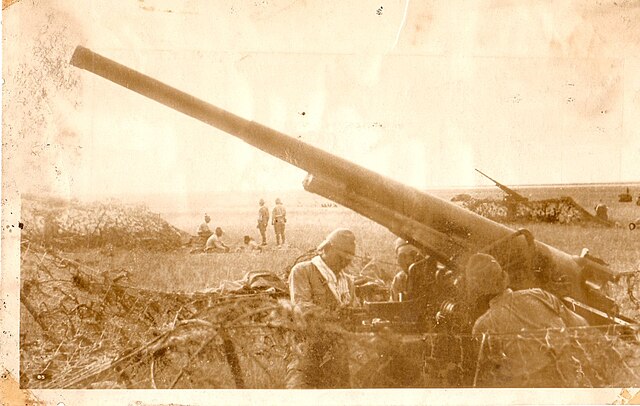The Type 88 75 mm AA gun was an anti-aircraft gun used by the Imperial Japanese Army during the Second Sino-Japanese War and World War II. The Type 88 number was designated for the year the gun was accepted, 2588 in the Japanese imperial year calendar, or 1928 in the Gregorian calendar. It replaced the earlier Type 11 75 mm AA gun in front line combat service, and at the time was equal in performances to any of its contemporaries in western armies and was considered capable of handling any targets the Japanese army was likely to encounter on the Asian mainland. Although it was soon overtaken by improvements in aircraft technology and was largely obsolete by 1941, it continued to be used on many fronts until the end of the war.
Type 88 75mm AA gun at Yasukuni Shrine, Tokyo
A battery of Type 88s of the 2nd AA-Regiment (IJA 1st Division)
A Type 88 used as coastal artillery on Attu Island in 1943
The QF 3-inch 20 cwt anti-aircraft gun became the standard anti-aircraft gun used in the home defence of the United Kingdom against German Zeppelins airships and bombers and on the Western Front in World War I. It was also common on British warships in World War I and submarines in World War II. 20 cwt referred to the weight of the barrel and breech, to differentiate it from other 3-inch guns. While other AA guns also had a bore of 3 inches (76 mm), the term 3-inch was only ever used to identify this gun in the World War I era, and hence this is what writers are usually referring to by 3-inch AA gun.
Aboard HMS Royal Oak in World War I
Guns on 4-wheeled trailers with Vickers Predictor at left, Australia c. 1937
Demonstration of towing on 2-wheeled travelling platform
Demonstration of deployment for action on cruciform travelling platform with wheels removed







